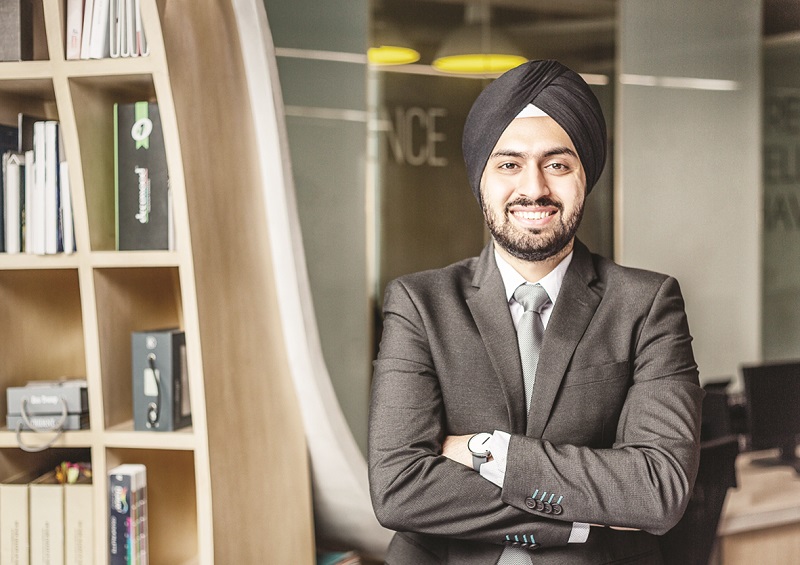We may not be aware of it, but architecture touches every aspect of our life. From office spaces to public areas, the look and feel of an area serves a definitive purpose. When it comes to healthcare, this concern is particularly important as people who frequent these places often need to be cheered up. Keeping these important pointers in mind, the Creative Designer Architects (CDA) firm chose to specialise in healthcare architecture. The Associate Director of the firm, Ravideep Singh, joins Sunday Guardian for a chat about the firm’s interesting practice. Excerpts from an edited interview:
Q. Why did you choose a career in architecture with a focus on healthcare?
A. After my post-graduation from the University of Illinois U.C, School of Architecture, I specialised in ‘Healthcare Planning’ from Cornell University, NY. My journey from there has been a continuation of CDA’s two-decade-long quest to understand and innovate healthcare design in India. Creative Designer Architects was established in 2001 by my parents, Maninder Kaur and Mohanbir Singh, and I joined the firm as the Associate Director in 2020. Since then, I have worked on several healthcare and commercial projects, including AIIMS Guwahati, Nanavati Hospital in Mumbai, Paras Healthcare, Kanpur, and Sarvodaya Hospital, Noida.
I strongly believe in the communicative power of design – the ability of empathetically-designed spaces to create uplifting sensory experiences. With a focus on blending seamless functionality with value-driven design, I aim to create environments that redefine benchmarks for quality healing facilities and positively impact their surrounding communities.
Having been born to and raised by parents who were architects, I had extensive exposure to architecture from a young age. I have always been intrigued by the ethical capacity of architecture and its power to impact the built environment. With an innate fondness for spatial planning, I always felt a sense of satisfaction when conceptualising forms and analysing their impact.
The inclination towards healthcare was perhaps a more intuitive call than a pragmatic one. I believe healthcare architecture exemplifies the capacity of architecture to balance environmental concerns and well-being. The conspicuous gaps in the Indian healthcare sector further reinforced this quest and I felt the need to delve into this space and attempt to bring about meaningful change.

Q. What was your initial design vision and has that vision changed over time?
A. CDA began operations around the year 2000. However, my active contribution started around 2016. My vision began with a functional healthcare design that could create a healthy and equitable environment for all users. This was a massive gap in the healthcare sector back then.
Today, as we speak
This is evident in our projects undertaken within the past few years, with the most crucial ones being in the field of healthcare. AIIMS Guwahati is one of India’s largest and most comprehensive health campuses. It lays strong emphasis on patient experience, health, wellness and sustainability. Another significant project in the pipeline is the expansion of Nanavati Hospital in Mumbai. Set to be one of the largest private hospitals in the city, it attempts to blur boundaries between healthcare and hospitality and be a beacon of international health tourism in India. The upcoming project Mix Nirogi for Max Healthcare in Patparganj is a 419-bedded medical campus designed on the principles of empathetic design, intelligence and resilience.
The Hoshiarpur and Kapurthala Integrated Medical Campuses were recognised during the pandemic for their responsiveness to Covid-19 and CDA’s underlying sustainability and wellness strategies. The upcoming Yashoda Medicity in Indirapuram is a 1200-bed unit aggregate hospital model. Each department is designed to offer end-to-end care, i.e., research – consultation – diagnosis – treatment and rehab, all at one location. So far, we have successfully delivered over 150 projects across India.

Q. What have been the biggest challenges you have faced so far?
A. Each healthcare project is challenging in its own way. A few forms of challenges experienced include:
curtailing the high cost of construction and shrinking the construction timelines to yield quicker ROIs;
hallenging construction sequencing for large urban hospitals with deep basements.
Healthcare projects require greater involvement and offer more interesting perspectives of viewing built environments. Hospitals embody carefully planned functional spaces where distinct medical programmes are carefully intertwined to achieve a seamless operational flow and resonate with high care delivery standards. As an outcome, the structural and electro-mechanical systems necessitate a higher resolution level to achieve streamlined operation and maintenance. What makes healthcare even more interesting is its uncharted potential of enhancing patient experience, care and safety that the facility can offer beyond clinical care. This, for me, is perhaps one of the primary reasons to pursue this niche.
Q. How did the pandemic affect your design practice? Have you seen a change in people’s mindsets and their demands?
A. The pandemic has unveiled the inefficiencies of the healthcare facilities in terms of their operations. Most people still believe that pandemics occur only once in a lifetime. However, there is a growing shift in the mindset of healthcare providers – particularly in terms of increased concern towards infection isolation, patient and caregiver experience (from a cognitive standpoint) and most importantly, instilling some degree of resilience in the facility – enabling a pro-active response against mass calamities and pandemics.
Q. How do you ensure that each project stays distinctive since you specialize in a single niche?
A. Healthcare design is vast. Each project brings with it a unique set of nuances with respect to the medical programme (which is based on its service area and respect disease profile), site context and profile and most importantly, the specificity of each project in terms of its vision that ought to translate into the spaces and the experience of the hospital.
Noor Anand Chawla pens lifestyle articles for various publications and her blog www.nooranandchawla.com.

